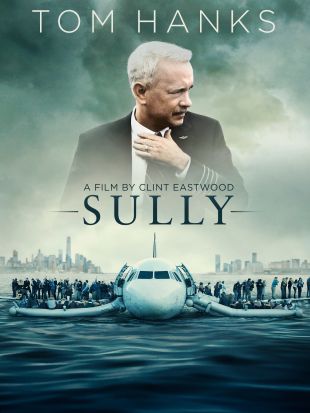
On January 15, 2009, US Airways Flight 1549, carrying 155 passengers and crew, was struck by a flock of Canadian geese shortly after takeoff from New York's LaGuardia Airport. The multiple bird strikes knocked out both engines on the Airbus A320, forcing veteran pilot Chesley "Sully" Sullenberger to make the controversial decision to attempt a forced water landing on the icy Hudson River. The emergency ditching was successful, and all 155 people onboard survived. Sullenberger was immediately hailed as a hero in the press and by the passengers and crew, which is the part of "the Miracle on the Hudson" story that most people know. But what wasn't well-documented at the time was that not everyone was quick to praise Sully's daring efforts. Investigators with the National Transportation Safety Board believed Sullenberger could have -- and should have -- flown the plane back to LaGuardia or tried to land at Teterboro Airport in New Jersey, thus preventing further damage to the aircraft and lessening the danger to those onboard. The question of whether Sullenberger made the right decision, and the emotional impact that fateful choice had on the former Air Force fighter pilot, are at the heart of director Clint Eastwood's probing, deeply affecting docudrama.
Eastwood and screenwriter Todd Komarnicki, working from the book Highest Duty by Sullenberger and Jeffrey Zaslow, eschew a chronological depiction of these events; instead, they begin their phenomenal tale with Sully (Tom Hanks) experiencing vivid flashbacks of the incident and the tragic outcome -- crashing into a New York City skyscraper -- that likely would have occurred if he hadn't made his harrowing, split-second decision. The image of an airplane smashing into a Manhattan high-rise, of course, conjures up disturbing memories of 9/11, but the scene isn't there for mere shock value: It underscores the fact that Sullenberger saved more than 155 lives that day, and that if he had followed protocol rather than his gut, everyone onboard and a number of innocent bystanders probably would have perished. But the NTSB will have none of it. The grim-faced panel, led by bulldog chairman Charles Porter (an intimidating Mike O'Malley), are determined to prove that Sully's actions were reckless. They claim there was enough thrust left in one engine to make a safe return, and flight simulators appear to back up their assertions. Even Sully questions what he did. "What if I did get this wrong and endangered the lives of all those passengers?" he asks his wife Lorrie (Laura Linney, doing solid work in the thankless role of the supportive spouse) during an emotional phone call.

If the NTSB rules against Sully, he will lose both his job and his pension after four decades of loyal, unblemished service. "I've delivered a million passengers over 40 years, but in the end I'm going to be judged on 208 seconds," he says. Yes, 208 seconds. The entire flight, from bird strike to safe water landing, lasted less than four minutes, which presents an interesting dilemma for the filmmakers: How do you make a feature-length movie out of such a short event, one whose outcome is already well-known? One way is to show portions of the flight multiple times from different perspectives, as we witness reactions from not only the cockpit, but also the control tower, the plane's cabin, and rescue units aboard helicopters and boats. Yet this approach, while it offers unique viewpoints, ultimately feels like padding. Sully flies by in a brisk 96 minutes, but it would have been more intense and more involving had the run time been trimmed a bit further. And it doesn't help that its humble hero is such an unremarkable straight arrow; fortunately, that man is played by Tom Hanks, who burrows beneath Sully's plainspoken exterior to deliver an unfussy, graceful performance that is all the more powerful for its subtlety.
Eastwood's decision to shoot Sully with IMAX cameras adds a visceral punch to the in-flight scenes, putting viewers right inside the frenetic cabin and cockpit. But the most affecting moment of the film occurs during the final credits, when we are introduced to the real Sully, his wife, and the passengers and crew of Flight 1549. When some of the passengers identify themselves by their seat numbers, the full impact of Sully's remarkable actions hit home with a quiet but blunt force. It will make you thankful that there are still upstanding people like Captain Sullenberger out there when extraordinary events unfold.
